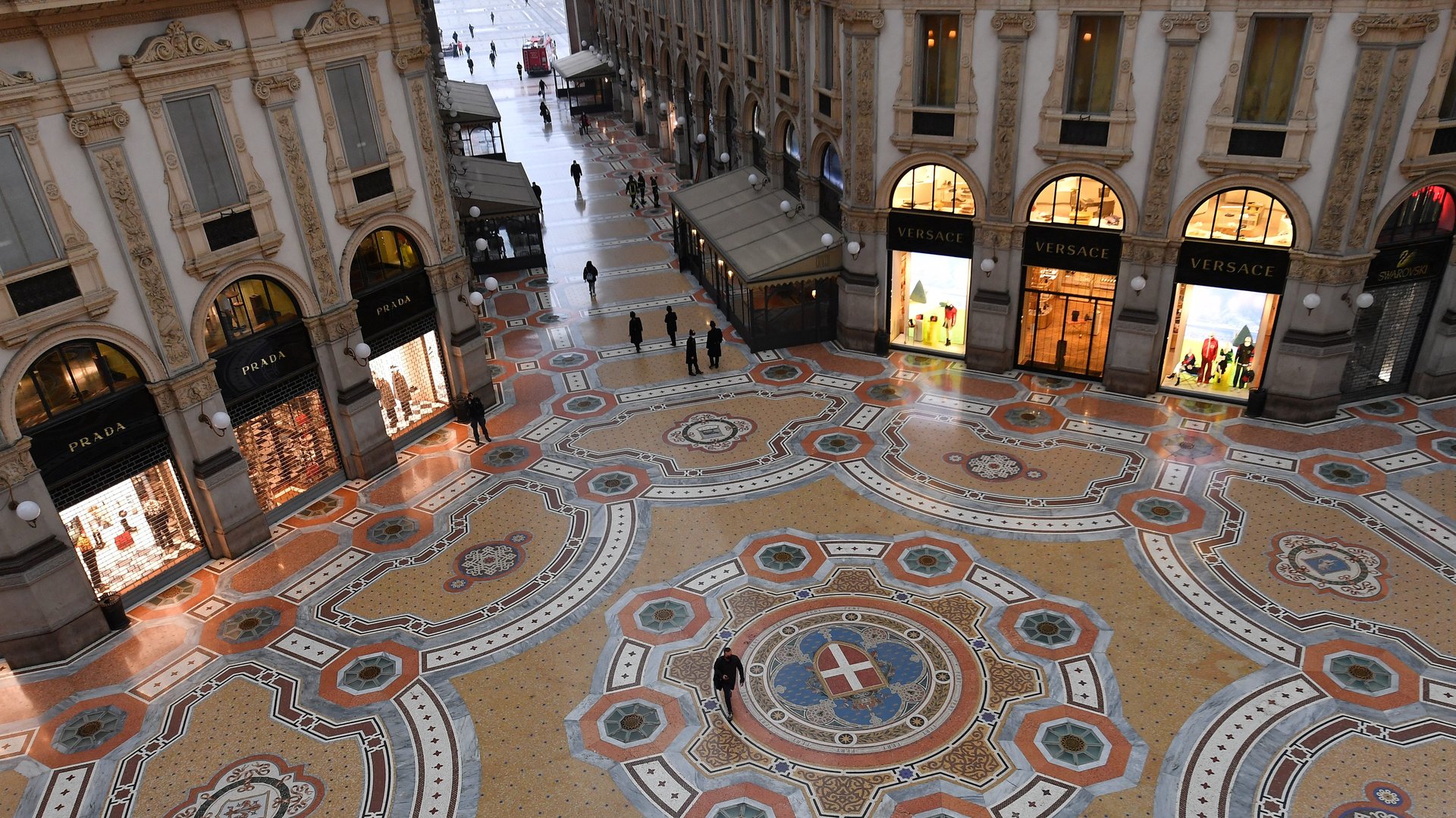Europe is dragging down the global fashion recovery
In China, fashion sales have already been on the road to a recovery from the pandemic for months.


In China, fashion sales have already been on the road to a recovery from the pandemic for months.
The US has moved more slowly, but while Covid-19 remains a serious problem in many states, retailers say they see signs of shoppers starting to buy clothes for life after lockdowns.
In Europe, though, the picture doesn’t look very rosy. “Our outlook for 2021 is particularly downbeat in Europe,” McKinsey & Co. and fashion trade publication Business of Fashion (BoF) stated in a recent joint report. It predicted sales in Europe could remain 12% to 24% below their 2019 levels.
The global fashion market is in the midst of an uneven rebound from the lows of 2020, when the pandemic forced widespread store closures and many shoppers paused spending on clothes and other non-essential items. China’s fashion sales dropped 7% in 2020 compared to the previous year, according to McKinsey and BoF. In the US, sales plunged 23%.
Europe looked slightly better, declining about 20%. But the figure, the report noted, obscures drastic regional differences: In Italy, Spain, and some eastern European countries, sales plummeted far further, while Germany and France fared better.
Even as retail sales rise again across Europe, they’re following a similar pattern. Economists at investment firm UBS have predicted that consumer spending will lag in Italy, Spain, and the UK, which is also dealing with the economic bumps of Brexit.
Slow vaccine rollouts and Covid-19 outbreaks
The situation across the region remains precarious. Vaccine rollouts have been slow, and Covid-19 cases are growing in several countries (paywall). While numbers have largely plateaued in France and Germany, many neighboring states are struggling to contain outbreaks, prompting concerns in places such as Germany about lockdowns lifting too quickly.
McKinsey and BoF estimate that if lockdowns extend through the beginning of April, that alone could plunge European clothing sales to 2020 levels, “or worse if there are further setbacks in the second half of the year,” the report noted. Uncertainty could also remain high among shoppers for some time, meaning more saving and less spending, potentially affecting sales into the second half of the year, even if the lockdowns have passed.
The report also provided a more optimistic scenario where stores are generally open again by mid-March and consumer sentiment swings positive by the end of the year, leading to at least a partial recovery.
The challenges facing Europe’s fashion sales aren’t just about fewer Europeans spending on clothes. Many stores in the region’s tourist capitals depend on traveling shoppers for sales. But the pandemic has wiped out tourism, hitting some companies hard. When Gucci reported a slide in sales in its most recent quarter, even as its top luxury peers are on the mend, it blamed part of the weakness on its particular reliance on tourists.
In the US, McKinsey and BoF expect fashion sales to be better than last year, but still down compared to pre-pandemic levels. China, meanwhile, is poised for a complete recovery, with luxury sales in particular surging. Europe’s rally seems like it will have to wait.